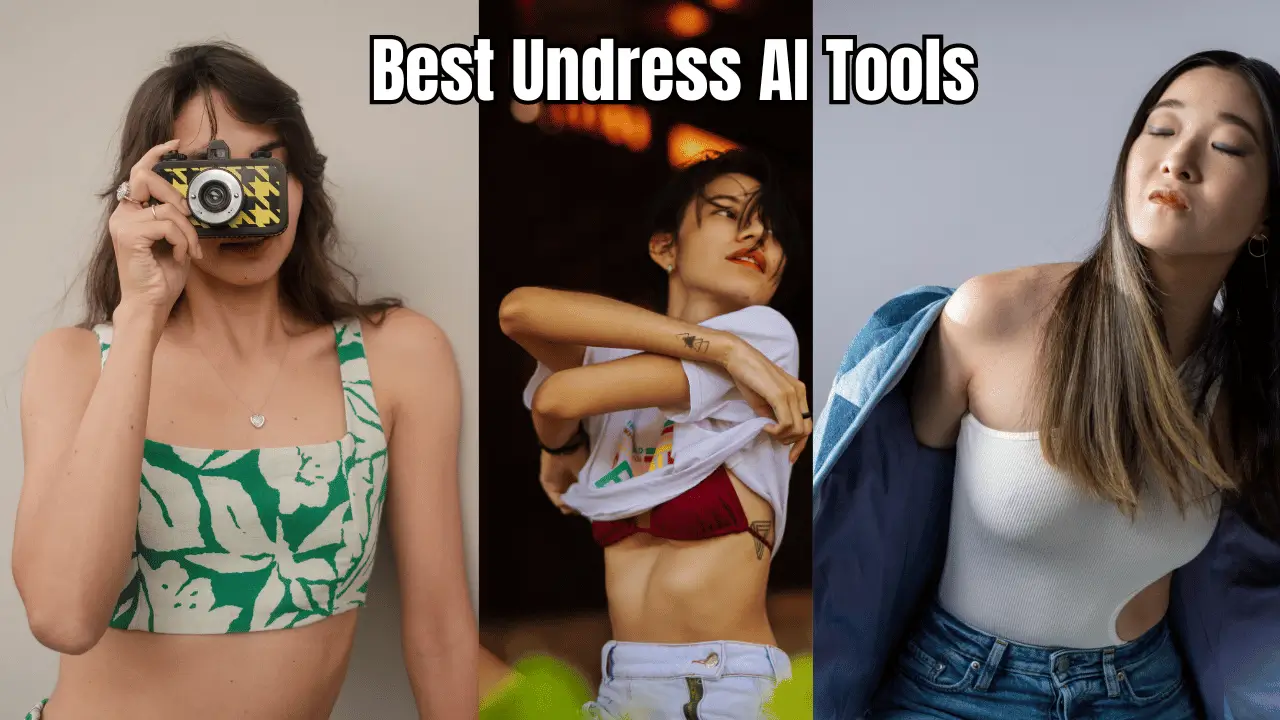Can artificial intelligence truly strip away the clothes we wear, revealing a digital nudity with the click of a button? The rise of AI-powered "undressing" tools presents a complex ethical dilemma, blurring the lines between technological advancement and the potential for misuse and severe privacy breaches.
The digital realm is witnessing a rapid proliferation of artificial intelligence (AI) tools, some of which offer the startling capability to digitally alter images, effectively removing clothing from photographs. While proponents tout these tools for creative and professional applications, a shadow of concern looms large, fueled by the potential for misuse, privacy violations, and the ethical implications of manipulating human imagery. This article delves into the functionalities of these AI-driven undressing platforms, explores their intended uses, and, crucially, examines the ethical quandaries they inevitably create. From designers visualizing garment fit to artists exploring new creative avenues, the capabilities offered by these tools are considerable. However, the ease with which images can be manipulated necessitates a careful consideration of the potential for harm. The core functionality of these tools often relies on deep learning algorithms, specifically models like stable diffusion and generative adversarial networks (GANs). These complex systems are trained on vast datasets of images, allowing them to "learn" and then "create" photorealistic versions of images that reflect the requested alterations in this case, the removal of clothing. But the very sophistication of these tools is what makes them so unsettling.
One platform, Undress VIP, markets itself as a free AI service capable of digitally undressing individuals in photographs. Its availability, however, instantly raises flags. Ethical concerns surrounding this type of technology are multifaceted. The primary concern is the potential for the non-consensual creation and distribution of explicit images. This is particularly alarming given the ease with which such images could be disseminated online, potentially leading to harassment, stalking, and other forms of digital abuse. The technology could also be used for malicious purposes, such as creating deepfakes to damage reputations or blackmail individuals. These risks underscore the crucial need for robust ethical guidelines and regulations governing the development and use of this type of AI. The issue of consent is central to this discussion. The creation of an explicit image without the subjects knowledge or permission constitutes a violation of their privacy, and the widespread availability of such tools can exacerbate this violation significantly.
- Exploring Somali Wasmo On Telegram Trends Insights
- Viral Content Secrets Your Guide To Online Success With Viralkandcom
Another tool gaining traction is Slazzer 3.0, a free, online AI application. It offers powerful features for removing clothes from images. The appeal of Slazzer 3.0 lies in its ease of use and its promise of a 100% free service. This, of course, is a significant draw for many. Users can test the platform's capabilities without any subscription fees or upfront costs. This accessibility means more individuals have access to the technology, potentially increasing the likelihood of both beneficial applications and harmful misuse. As well as this, the ability to have 10 free trials of clothing removal per day, further encourages experimentation. The potential for misuse, particularly when combined with the accessibility of the tool, means these free trials could be utilized for purposes ranging from harmless experimentation to the malicious creation of explicit content.
In addition to Slazzer 3.0, various other platforms are emerging, each offering unique features and functionalities. Unclothy, for instance, is another AI tool designed to "undress" photos. It leverages advanced AI models, allowing users to upload images and automatically detect and remove clothing, resulting in images it describes as "deepnude." Virbo AI's free photo editor offers a different approach, automatically removing original clothing and swapping it with alternative outfits, such as haute couture gowns, streetwear, or athletic gear. These examples highlight the diversity of applications, and how AI tools can be used to transform images. The focus on creative applications is meant to show the different uses of these technologies, however, it highlights the very real possibility of abuse. As these tools become more refined, the line between legitimate and malicious use becomes increasingly blurred, further complicating the ethical considerations.
The creators and providers of these AI tools often highlight the creative and professional applications of their technology. For instance, designers can utilize these tools to visualize how garments fit and drape on different body types without creating physical prototypes. This could expedite the design process and reduce costs. Artists might use these tools to enhance or modify images for artistic projects, achieving a seamless and realistic finish. These examples offer a glimpse of the legitimate use cases of this technology. The ability to instantly transform outfits or modify images opens new doors for creativity and innovation. However, the very features that enable these creative applications also enable the creation of non-consensual, explicit content.
- What Is Telugu Movierulz Unveiling The Truth 2024
- Bollyflix Your Ultimate Guide To Bollywood Movies Streaming
The ethical debate surrounding AI clothes removers is particularly complex. The technology itself is not inherently evil; it is simply a tool. The ethical challenges arise from its potential misuse and the societal context in which it operates. The creation of deepfakes, the ease with which images can be manipulated, and the potential for non-consensual image distribution are all major concerns. The development of this technology demands a multi-pronged approach. First, it is essential to establish robust ethical guidelines. Developers and users must be aware of the potential for harm and act responsibly. Education and awareness campaigns are crucial to informing the public about the risks associated with this technology. Finally, policymakers need to formulate clear legal frameworks that address the misuse of these AI tools, including provisions for consent, privacy, and the consequences of non-consensual image distribution. The balance between technological advancement and ethical considerations must be carefully managed to protect individuals from harm.
The following table offers a comparative analysis of some prominent AI clothing removal tools, focusing on their key features, intended use cases, and the ethical implications associated with their use. This data is presented in a format suitable for integration into a WordPress environment, allowing for easy accessibility and comprehension of the subject matter.
| Tool Name | Description | Key Features | Intended Use Cases | Ethical Considerations |
|---|---|---|---|---|
| Undress VIP | AI-powered service offering free image undressing capabilities. | AI-driven image transformation, realistic clothing removal. | Potentially for experimentation, but primarily vulnerable to misuse. | High risk of non-consensual image creation, potential for misuse and privacy violations. |
| Slazzer 3.0 | Free online AI tool for removing clothes from images. | 100% free AI clothes remover, no subscription fees, quick results. | Creative projects, visualising clothing on different body types. | Risk of misuse, potential for creating inappropriate content, and invasion of privacy. |
| Unclothy | AI tool designed to "undress" photos. | Automatic clothing detection and removal, generates "deepnude" images. | Experimentation, exploring altered image formats, possibly creative endeavours. | Extremely high risk of misuse, potential for non-consensual image creation, and significant privacy violations. |
| Virbo AI | Free photo editor with outfit swapping capabilities. | Automatically removes clothing and swaps with alternative outfits. | Fashion design, exploring different clothing styles, artistic projects. | Lower risk, if used responsibly. Potential for the creation of inappropriate content and privacy concerns. |
| DeepNude (Historical context) | An earlier application that gained notoriety for its ability to undress images, now discontinued. | Original iteration of AI-driven clothing removal. | Potentially experimental purposes, but prone to significant misuse. | Considerable ethical concerns. |
The question of "Why use an AI clothes remover?" is often posed by the developers of these tools. They emphasize creative and professional applications, such as helping designers visualize garment fit and drape. In addition, they are used to enhancing or modifying images for artistic projects, ensuring a seamless and realistic finish. These applications are valid, but it is essential to acknowledge that the same tools that facilitate these creative endeavors can also be used for non-consensual creation of explicit content. The ability to transform outfits instantly and the ease of replacing clothing through photo editing can be a boon for some, but again, it must be weighed against the risk of misuse.
When considering the range of options, the accessibility of tools like Focused free clothes remover AI tool and platforms that "boost your fun with AI undress images" is a concern. While some platforms offer limited free trials, such as the provision of "10 free trials of AI clothing removal per day," the ease of access raises serious ethical questions. The undress app, which utilizes advanced AI technology to digitally remove clothing and produce realistic outputs, and other similar photo editing tools that are designed to streamline the process, making it easy for users to experiment with digital wardrobe simulations, are potentially open to widespread abuse.
In conclusion, the development of AI clothes removers presents a double-edged sword. While the technology promises innovative opportunities in fields such as fashion design and artistic expression, the potential for misuse and the violation of privacy are significant. A responsible approach necessitates establishing clear ethical guidelines, raising public awareness about the risks, and enacting legal frameworks to govern the development and use of these tools. The future of AI-driven image manipulation depends on how well we navigate this complex ethical landscape.
- Regal Movie Deals Showtimes Find Tickets More
- Unveiling Jarrod Kilner Husband Of Fern Sutherland More


